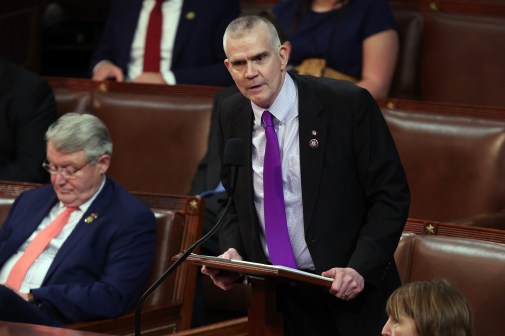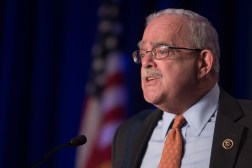While many support the current form of the Federal Information Technology Acquisition Reform Act that passed the House May 22 for the third time in nearly 15 months, some of the bill’s earliest advocates said the changes aren’t quite the reform they initially hoped for.
Brocade Communications Systems, a tech company focusing on products for data storage and networking, was part of the initial House Committee on Oversight and Government Reform hearing on January 22, 2013, about federal IT acquisition – the foundations of what would later become FITARA. At that hearing, the company’s former CEO, Michael Klayko, testified about the costs of over-dependence on a single-source supplier in the federal acquisition process.
Now, the company’s director of federal sales, Tony Celeste, said the latest version of the bill is good, but that government IT reform isn’t quite finished yet.
“We’re excited about the bill in its current draft,” Celeste said. “We were a little disappointed to see the IT centers of excellence be pulled from the bill. The rationale behind that was we thought that having the IT acquisition centers in there would give agencies the ability to see new technology, to try new technology, that they’re now not going to have the opportunity to do.”
In the original drafts of FITARA, provisions were established for certain agencies to be the “go-to” centers for IT acquisition, according to a post on the committee’s website about the bill. Dubbed Assisted Acquisition Centers of Excellence, the agencies would centralize the knowledge of specialists to help make up for the shortage of staff.
With the exception of the centers of excellence, the latest draft of FITARA, which passed as an amendment to the 2015 National Defense Authorization Act, is a step in the right direction, Celeste said. The bill would empower agencies to work to acquire technology from companies like Brocade to modernize their IT infrastructure and cut costs.
“We also like the fact that they’re appointing a federal acquisition regulatory council with the assignment of drafting new regulations or policy that encourages acquisition officials to engage more with industry, so this will allow for more open dialogue and more exchange of information,” Celeste said.
Rep. Gerry Connolly, D-Va., sees it as the most comprehensive overhaul of how the federal government manages IT acquisition and employment in decades.
“[The bill] really represents the most comprehensive overhaul of how the federal government manages IT acquisition and employment, frankly, since Clinger-Cohen about 20 years ago,” Connolly, a co-author of the bill, said at the TechAmerica Foundation Cloud Buyer’s Guide Rollout last week. “Now 20 years is a lifetime in technology, and so we’ve got a ways to go.”
In his remarks at TechAmerica, Connolly said that FITARA has no politics attached, but is instead designed to reorganize and clean up the federal IT space.
“We have 250 people with the title of [chief information officer]. What private company would want to do that? I mean, someone’s got to be in charge. Maybe lots of people who help that person, but somebody has to be accountable,” Connolly said. “I’m pleased to say politics played really no role in the bill; in fact, in many ways FITARA codifies a lot of the reforms originally enunciated by [the Obama administration.]”
In addition to reducing the number of CIOs across agencies, FITARA also instills more power in the person who lands the position.
“We want to give them authority, we want to give them autonomy and flexibility to make common-sense kinds of decisions, but we also want them to be accountable at the end of the day, so our bill would also do that,” Connolly said.
Celeste echoed Connolly’s statement. Through the new provisions in FITARA, Celesete said, the CIO is empowered to leverage more authority over the IT realm.
“They’re empowering CIOs,” Celeste said. “We feel pretty strongly that with more authority over budget and procurement planning, CIOs can more adequately address the challenges that have led to these non-competitive acquisition practices to under-performing IT programs and networks and to increase cost of ownership and acquisition costs.”
With the sponsors of the bill hailing from the House Committee on Oversight and Government Reform, a central focus of the bill is transparency.
“You’ve got a lot of transparency and oversight,” Celeste said. “They did a lot of work to add more transparency into what the government was going to do.”
Reps. Gerry Connolly, D-Va., and Darrell Issa, R-Calif., who penned the original bill in early 2013, have been working more than a year to get FITARA passed. The bill saw its most recent blow when extracted from the National Defense Authorization Act in late fall 2013. FITARA passed as an amendment in the House in June 2013, but was stripped from NDAA by the Armed Services Committee over Thanksgiving recess. In the original draft, the CIO-expanded authority applied to all agencies “other than the Department of Defense.” But the latest version includes DOD.
“So we await action in the Senate, which we call the other body around here,” Connolly said. “This is not that hard, it’s a great start, it may not be permanent, but let’s not make perfect the enemy of good. It’s a great start and we have broad consensus on this issue, so let’s strike while we can.”




